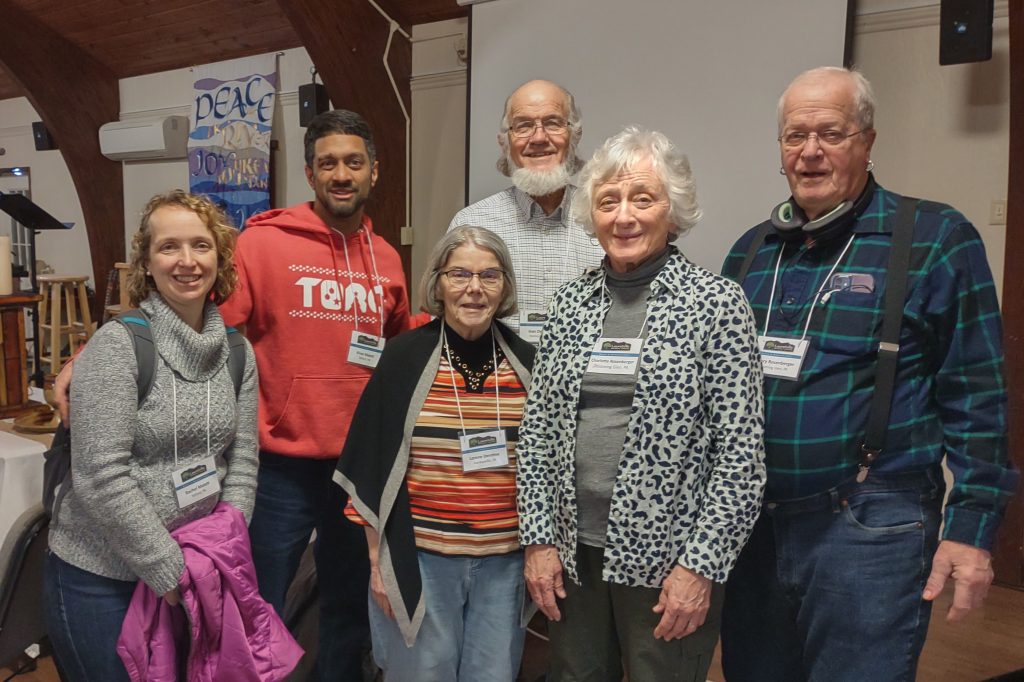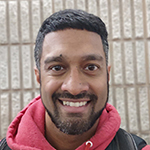by Kiron Mateti
I didn’t grow up Mennonite, or even Christian for that matter. My introduction to the Mennonites came from meeting a woman named Rachel at Penn State in 2006. I had just come to Christ months earlier, following the sudden passing of my older brother in a car accident. My mother, who had converted from being a devout Hindu to a “born again” Christian a decade prior, had a large influence on me, but I wanted my own faith. While reading Matthew’s gospel, I saw contradictions between what Jesus said and what I saw in the church. My take was that Christians were conservative, nationalistic, pro-gun, and cared more about internal piety than systemic social justice issues.
Rachel was different. She had traveled internationally, cooked huge meals of rice and lentils, lived in community, played Dutch Blitz, and pronounced “Pakistan” correctly. As an Indian-American, that last point showed her desire to learn about other languages and cultures, instead of having an America-first mentality. The Mennonites impressed me by intentionally trying to live out the Sermon on the Mount. Rachel impressed me too, and I now share her name.
At the time, we attended University Mennonite Church (UMC) in State College, PA, where I first learned to love four-part harmony hymns. Despite being internationally focused, I was one of the few non-white people at UMC, which is something I was used to, having grown up in the suburbs of southwest Ohio.
Fast forward to January 2023, as part of Plains Mennonite Church (PA), Rachel and I attended the Laurelville Worship Retreat, where hymns from the new Voices Together (VT) hymnal were introduced. Walking into the room with 70 worship leaders singing perfectly pitched four-part harmony was an incredible experience. We learned of the great effort to include songs from Mennonites around the world, as well as attempts at inclusivity.

The guest speaker was Safwat Marzouk, an Egyptian-Presbyterian, and author of the book Intercultural Church. He introduced the idea of “hyphenated Christians,” which resonated with me. We are all hyphenated in some way, bringing our heritage, experience, and culture to the table. I am a Cleveland-Indian-American-Charismatic-Anabaptist Christian, whose faith journey is quite different from many Swiss-German Mennonites. Still, I was once again one of the only people of color, despite intercultural intentions.
Just a few weeks later, I attended Mennonite Church USA’s Hope for the Future Conference (HFF) as a Mosaic Conference board member.

I was no longer the only person of color. BIPOC (Black, Indigenous, People of Color) leaders from nearly every continent, ethnic background, and generation came together to connect, learn, and celebrate. We focused on radical hospitality (the antithesis of xenophobia), staying connected to the global story, and taking a stand against injustice wherever it’s found.
Here I saw a Mennonite world that embraced diversity of culture by boldly clearing away the tables for dancing. Wearing my kurta pyjama, I learned how to salsa and then managed to sneak a Bollywood song in there, to give a little Indian flavor to things.
I see examples of the kingdom in both of these seemingly different experiences — one more traditional and one that gives a glimpse into what the Mennonite church of tomorrow may look like.
“We must progress from being multicultural, in which our differing cultures exist independently, to being intercultural, in which we immerse ourselves in cultures unlike our own.”
We must progress from being multicultural, in which our differing cultures exist independently, to being intercultural, in which we immerse ourselves in cultures unlike our own. Further, just as Jesus turned the kingdom upside down, those in power must ensure that everyone has a seat at the decision-making table. In this way, we can have mutual respect for one another and truly call ourselves the family of God.
To read a longer version of this article, please go to https://www.mennoniteusa.org/menno-snapshots/finding-my-seat-at-the-mennonite-table/ Reprinted and edited with permission.

Kiron Mateti
Kiron Mateti is a Mosaic Conference board member. He attends Plains Mennonite Church (Hatfield, PA) and lives in Telford, PA with his wife Rachel, and kids, Asha (10), Jaya (7), and Noah (3). He is a robotics engineer developing software for autonomous semi-trucks, and will talk for hours about robots if you will let him. He enjoys playing guitar, throwing frisbee, and building Legos with his kids.





 At the beginning of our worship service, our worship leader Rina Rampogu reminded us that our worship time could possibly have less structure and more spontaneity. About halfway through the service, smells of Congolese food being heated in the kitchen downstairs wafted up.
At the beginning of our worship service, our worship leader Rina Rampogu reminded us that our worship time could possibly have less structure and more spontaneity. About halfway through the service, smells of Congolese food being heated in the kitchen downstairs wafted up.






